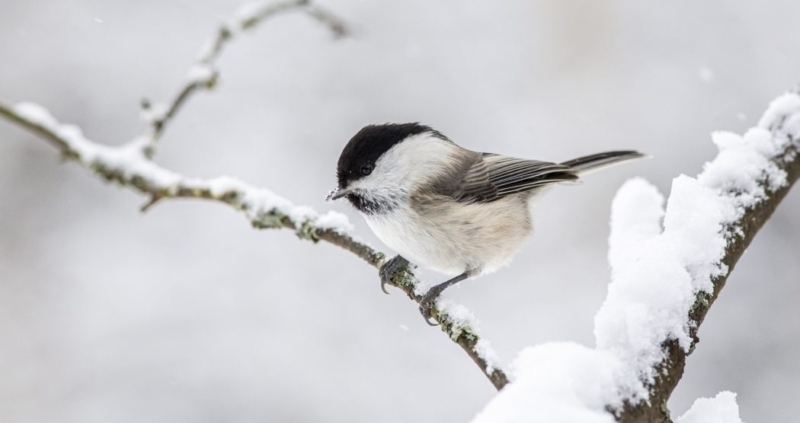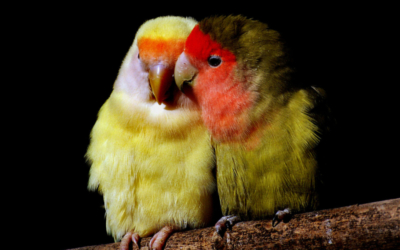Weather Whiplash: How Extreme Winters Impact Wildlife
In recent years, climate change has had an increasingly visible impact on the environments and species around us. It is well documented that globally, temperatures have been elevating for decades. Since 1880, the combined temperature of the land and oceans around the world has increased about 0.08°C each decade — but since 1981, the average rate of increase has been more than double that previous rate. 2020 was one of the three warmest years on record, with the preceding ten years being the warmest decade on record.
One of the major drivers of climate change is human-caused greenhouse gas emissions, which result not only in warmer overall temperatures, but also in extreme cold conditions. Due to warming temperatures, the polar vortexes, two areas of cold air that circulate around the north and south poles, have shifted away from the poles. This migration of polar vortexes leads to colder-than-average temperatures in areas where this is not the norm.
Shifting seasons and extreme weather events have very dire effects on wildlife — scientists estimate that 3 to 14% of species in terrestrial ecosystems risk extinction if global warming levels reach an increase of 1.5°C. Migratory species have had their patterns disrupted and rerouted due to unusually mild winters and extremely cold winters alike, and species that overwinter have to adjust and adapt to these changing conditions as well.
This blog will explore how warmer- and colder-than-average winter weather affects wildlife, as well as how corporate conservation programs can help mitigate these effects and support the affected species.
Struggling to survive during warm winters
While it may seem counterintuitive at first, many overwintering species use the insulating property of snow to stay warm during the winter. The pika, for example, builds a den with grasses collected during the summer, which is then further insulated by snowpack. More temperate winters mean less deep snow to keep these animals warm. One way to address this issue is to provide nest boxes or other habitat structures in which wildlife can overwinter. The use of living snow fences can also help retain snowpack.
Animals with specific adaptations for cold weather – thick fur, for example — are not well-suited to handle rising temperatures, so they migrate to colder areas, which often ends up fragmenting their populations. This fragmentation is exacerbated by the impact of climate change on these species’ habitats. For example, the Canada lynx depends largely on boreal forest habitats, which are at risk of disappearing due to climate change. With their habitats shrinking and their populations separated, it becomes more difficult for species like these to thrive. Conservation programs can ensure habitat connectivity by maintaining movement corridors and restoring affected species’ habitats.
Warmer temperatures also affect the life cycles of and increase the range of some invasive species, such as the diamondback moth. Invasive species like these outcompete native species for resources, and when combined with the already detrimental effects of global warming on native species, it becomes even easier for invasives to overtake them. Invasive species management techniques such as biological control methods, integrated pest management or cultural control methods can help mitigate the spread of invasive species due to climate change.
Severe winter weather can be fatal
As mentioned earlier, climate change has resulted in more extreme winter weather, such as the expansion of the polar vortex. Just as unseasonably warm temperatures affect wildlife, so does an extended period of intense cold.
Animals expend more energy to survive in extremely cold weather, which puts them at higher risk of starvation, especially if their usual sources of food have died from the cold. For animals that are not well-adapted to the cold, such as Virginia opossums, extreme winter weather can lead to frostbite on vulnerable parts of their body like their ears or tail.
Marine wildlife is also greatly impacted by extreme cold. Unexpected freezes can kill fish populations, which goes on to affect the ecosystem and the entire food chain. Frozen water bodies also mean less access to food for water birds like ducks, and cooling water temperatures can be fatal for animals like sea turtles or manatees that rely on warm water. In fact, “cold stunning,” or the decrease in heart rate and blood circulation that sea turtles experience when water temperatures drop, kills over 60% of non-migratory turtles.
Scientists have also researched the effect of the shifting polar vortex on birds’ migratory patterns. One study found that, immediately following a polar vortex, bird abundance decreased, with population levels returning to normal a few weeks later. This indicates that birds may have briefly left the area during the period of extreme cold. Bird migration patterns have moving north in recent decades, but climate change may accelerate that process and leave birds vulnerable to extreme temperatures in new locations. Conservation programs can observe and monitor the abundance of bird species visiting their site to develop a clearer picture of the population’s needs and provide shelter for overwintering or migrating birds to help support these species.
Climate whiplash hurts everyone
Heat waves and severe storms are predicted to only become more frequent due to climate change, as well as abrupt shifts between high and low temperatures. These shifts — sometimes called “climate whiplash” — can be detrimental to species’ survival. For example, some insects like crickets can survive a freeze through a process called diapause. However, if these insects emerge from diapause and face another cold snap, it is unlikely that they will survive a second freeze. Climate whiplash also limits animals’ access to food, if, for example, heavy rainfall is followed by a freeze that results in a layer of ice covering winter browse for deer.
Extreme changes in temperature also affect hibernating species, such as black bears. An early spring could trigger hibernating animals to wake up too soon, and if the temperature quickly swings back to cold, they likely face starvation if they are unable to find food during a period when they would normally be dormant. In addition, droughts and extreme heat due to climate change during the summer can also impact hibernation if animals are unable to store up enough fat. Conservation programs can help by ensuring there is enough food available for these species during their non-hibernating months.
Climate change has devastating effects on the environment, the economy, human health and, as these examples have shown, wildlife. Even throughout the winter, extreme heat and cold can leave wildlife without the resources they need to survive, which is why it is crucial that conservation programs take these growing needs into account.


